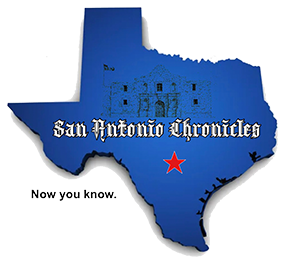San Antonio Metropolis Council unanimously authorised new zoning guidelines and a coverage framework Thursday which are aimed toward transit-oriented growth (TOD). The foundations are supposed to encourage bus ridership, space walkability and density alongside mass transit corridors within the metropolis — that are deliberate however not but constructed.
“Finally, the place we’re going with TOD is in an effort to rein in sprawl that makes our metropolis much less fascinating, dearer and fewer sustainable,” Mayor Ron Nirenberg mentioned after the vote. The aim is “to tie our transportation system planning with our land use and make it so that you simply don’t must have a automobile to get the place it’s essential go within the metropolis.”
A lot of the coverage framework, developed over the course of greater than a yr by a job drive and committee, is aimed toward eradicating boundaries for extra residential, business and mixed-use growth surrounding mass transit routes, which VIA Metropolitan Transit calls “superior speedy transit” or ART. (It’s extra generally generally known as “bus speedy transit.”)
Different sections are aimed toward mitigating the impacts growth might have on neighborhoods, corresponding to elevated property values and gentrification.
Councilwoman Melissa Cabello Havrda (D6) proposed permitting the sale of alcohol inside the TOD boundaries to make the zoning course of simpler for small companies. That modification was profitable with simply Nirenberg and Councilman Manny Pelaez (D8) opposed. The sale of alcohol will nonetheless be restricted on properties shut to colleges.
A serious concern of a number of residents is that TOD and the brand new Inexperienced Line will displace low-income residents — the first customers of mass transit in San Antonio — from the brand new bus routes.
Councilwoman Teri Castillo (D5), who has been skeptical of TOD for that very purpose, mentioned she believes that the town is well-poised to mitigate these impacts by means of the town’s $150 million housing bond, proliferation of land trusts and growth of different insurance policies to enhance housing affordability.
“There’s a dedication to spend money on anti-displacement insurance policies,” Castillo mentioned.
The now-$480 million ART Inexperienced Line might be a sooner and extra frequent bus route from the airport that may run by means of downtown to the missions. VIA additionally has plans to construct the east-west Silver Line in 2027, which might run from North Gen. McMullen Drive on the West Facet alongside West Commerce Avenue and East Houston Avenue to the Frost Financial institution Heart on the East Facet.
The zoning guidelines and map authorised Thursday will apply to areas surrounding the Inexperienced Line, slated for completion in 2027. Heaps which are at present zoned for single-family use inside the city core are ineligible for TOD zoning.
One other course of is underway to customise the boundaries and parameters for the Silver Line, which is scheduled to interrupt floor in 2029.
Whereas VIA’s Inexperienced Line and the town’s TOD coverage are separate, impartial initiatives, the organizations have been collaborating for years to align them.
Council’s motion doesn’t routinely rezone any properties, however property house owners can now apply to vary their zoning to the brand new TOD designations. Finally, these modifications are authorised by Metropolis Council after a proper, public course of.
These large initiatives have some neighborhood leaders nervous they may carry an excessive amount of site visitors and alter to a number of the metropolis’s oldest neighborhoods corresponding to Monte Vista and Tobin Hill. Others worry that superior speedy transit received’t ship on guarantees of financial or transportation advantages for residents.
One of many largest considerations amongst residents who signed as much as communicate Thursday, lots of whom reside in historic city neighborhoods, was parking.
On-site parking is just not required for mixed-use growth contained in the TOD boundaries, however a number of residents are involved that may imply folks will park on their slim neighborhood streets.
Councilwoman Marina Alderete Gavito (D7) proposed some minimal parking necessities for sure varieties of properties, however that modification was not profitable. Gavito, Pelaez and Councilman Marc Whyte (D10) voted in favor.
In a profitable TOD space, parking received’t be a precedence as a result of individuals are utilizing mass transit, Nirenberg mentioned. “It doesn’t imply we’re eliminating parking it simply implies that each single growth isn’t required to have a certain quantity of area devoted for these asphalt parking heaps.”
And parking necessities make housing dearer because the builders go that value on to renters or consumers, he mentioned.
“The council member’s modification watered [the policy] down only a bit,” Nirenberg added. “I perceive why she made it. I simply assume that, in the end, we have to take some important steps ahead to really implement TOD.”
TOD and bus speedy transit are key components of the SA Tomorrow Complete Plan adopted by Metropolis Council in 2016. TOD is a part of the town’s reasonably priced housing coverage adopted in 2018, in addition to the implementation plan in 2021. The town’s local weather motion plan additionally prioritizes TOD.
Just like the housing coverage, the town will in the end undertake an implementation plan for TOD, which might be developed by the town subsequent yr.
Councilman John Braveness (D9) was absent from the vote.





